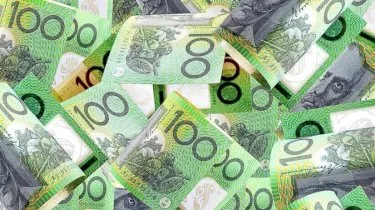Earn
What is capital gain?
Capital gain is the profit owners receive from the sale of an asset if the sale price is greater than its purchase price. However, these only result from the sale of capital assets which have a usable life longer than a year or significant properties, whether for personal use or investment purposes.
What is capital gain?
Capital gain is the profit owners receive from the sale of an asset if the sale price is greater than its purchase price. However, these only result from the sale of capital assets which have a usable life longer than a year or significant properties, whether for personal use or investment purposes.

The Australian Taxation Office (ATO) requires the inclusion of capital gains and losses when lodging tax returns because these transactions form part of one’s assessable income.
Taxation on the profits from asset sales triggers a special kind of duty called capital gains tax (CGT). Before discussing CGT-triggers and its formula for computation, however, it is important to understand the basics first.
Definitions
Some terms related to capital gains, losses and taxes are:
Capital assets: All assets acquired beginning September 20, 1985, whether for business or personal use, no matter how small or large, as long as it is usable for more than a year. These can be real property, machineries and equipment, collectables (i.e., paintings and signed books), stocks, bonds, options, rights or other investment securities.

Ownership of capital assets may also be acquired through purchase or inheritance. It is important for the owner to record when exactly ownership was transferred because this date is crucial for determining eligibility for discounts and exemptions.
Cost base: The price of the asset when it was originally purchased, plus all the expenses related to the purchase such as legal fees, stamp duty, depreciation, etc.
Personal use asset: Items which were purchased solely for recreation or personal enjoyment of the owner and/or their associates, such as furniture, electrical equipment and boats. Only personal assets amounting to $10,000 and above are subject to CGT.
Collectables: Items like stamp collections, antiques, rare manuscripts, paintings and the like which are purchased mainly for the personal enjoyment of the owner and/or their associates. Options, rights and debts are included as long as the collectable was acquired for above $500 and bought on or before December 16, 1995.
Capital gain: Capital gain is the profit that asset owners receive from the sale of their capital assets. Computing for the capital gain is straightforward because one only needs to subtract the cost base from the sale price.
Capital loss: The opposite of capital gain, capital loss happens when the selling price of an asset is below the cost base due to depreciation, among other things. Capital losses may be applied to future CGT and income tax to decrease the cost base.
Capital gains tax (CGT): Once the sale transaction is finalised, the asset owner must report their gains or losses as part of their assessable income (if the asset is not exempted from CGT).
More on capital gains
Capital gains may be considered short-term or long-term depending on the length of time the owner held onto the asset from the initial purchase to the eventual sale.
Let’s assume the sale transaction resulted in a capital gain.
Holding period and taxation
If the ownership was held for less than 12 months from the date of purchase, this will be considered a short-term capital gain and will be taxed based on the owner’s marginal tax rate. However, if the owner held onto the asset for at least 12 months before selling it, this will be considered a long-term capital gain and the owner may be eligible for a 50 per cent CGT discount.
Realised and unrealised gains
These refer to the asset’s appreciated value but does not necessarily trigger CGT.
This is because having unrealised capital gains means that the owner simply noted that the asset appreciated in value. They did not sell the asset so the gains were not realised and they are not taxed. When they do sell the asset, the perceived capital gain will be realised and will automatically trigger CGT—unless it falls under one of the ATO exemptions.
CGT exemptions
There are several circumstances that exempt owners from paying CGT for the sale of their capital assets.
Some of these are:
- Assets acquired on or before September 19, 1985
- The real property is a family’s main residence
- Motor vehicles that can carry fewer than 9 passengers and can carry a load less than 1 tonne
- Motorcycle or a similar vehicle
- Depreciating assets for taxable purposes, like equipment for business use
- Personal use items purchased for less than $10,000
- Collectables purchased for $500 or less. These include collectables that were worth less than $500 when acquired, even if their price appreciated later on
- Awarded items such as medals—unless it was purchased
- Competition prizes and gambling winnings or losses
How to compute for capital gain or loss
In order to compute for capital gain or loss, the asset owner must know the asset’s purchase price and the expenses related to the initial purchase. All these will form part of the cost base.
To compute for the cost base, subtract any depreciation and first home owner grant from the sum of the original purchase price and all related expenses.
In formula:
| Cost Base = (Original purchase price + expenses) - (depreciation + grants for purchase) |
The next step is to factor in the asset’s final sale price or:
| Capital gain/loss = Asset sale price - cost base |
If the sale price is higher, the formula would result in a positive amount, which means there was profit from the sale. A negative amount means capital loss.
For example, a person buys $500 worth of shares 5 years earlier and the company becomes successful enough that its shares’ value increase five-fold to $2,500. When the shareholder sells all the shares they have, it would register a $2,000 capital gain for the owner because $2,500 - $500 = $2,000.
If the owner held the asset for more than 12 months, they could be eligible for the discount to lower their assessable income from the sale to $1,000.
Using the same example above, assume that the company’s stocks plummeted 10-fold and the shareholder sold at a loss for $50. This would register a capital loss of $450 since $50 - $500 = - $450.
The $450 loss may be used to offset any capital gains from the current or future tax returns.
This information has been sourced from the Australian Taxation Office.
About the author

About the author


Salary
GoCardless calls for stronger small business support following rejection of Payday Super extension
GoCardless has urged the federal government to increase support for small businesses after the House of Representatives voted against a proposed amendment to the Payday Super legislation that would ...Read more

Salary
The financial benefits of a diversified income stream
In today’s volatile economic environment, relying solely on a single source of income can be risky. Diversifying your income streams can provide financial stability, reduce the risk of financial ...Read more

Salary
Despite losing top spot, Elon Musk rakes in $400,000 hourly
Elon Musk, the entrepreneur known for his involvement in a wide range of innovative and technological businesses, has recently been dethroned as the wealthiest individual in the world, with Bernard ...Read more

Salary
Rising unemployment and skill shortages prompt Australian businesses to look globally for talent
Australia has witnessed its unemployment rate surging above 4% for the first time in two years, revealed by the latest Labour Force data. Read more

Salary
New findings link job mobility hurdles to stagnant wage growth
Recent research from the e61 Institute has unearthed significant links between slow wage growth in Australia and obstacles to job mobility, including non-compete clauses, complicated occupational ...Read more

Salary
Employers scrambling to prevent workplace brain drain
As workplace managers face a swiftly evolving employment market that’s increasingly favouring the demands of white-collar employees and jobseekers, bosses are falling under mounting pressure to ...Read more

Salary
Unions back Albanese’s pledge to close gender pay gap
An electoral promise from Labor to make gender pay equity an objective of the Fair Work Act has been hailed as a “watershed moment” from industry peak bodies who have traditionally advocated for ...Read more

Salary
Coles asked to disprove $115m in alleged wage theft
One of Australia’s biggest supermarkets faces allegations that it underpaid more than 7,500 employees a total of $115 million. Read more

Salary
GoCardless calls for stronger small business support following rejection of Payday Super extension
GoCardless has urged the federal government to increase support for small businesses after the House of Representatives voted against a proposed amendment to the Payday Super legislation that would ...Read more

Salary
The financial benefits of a diversified income stream
In today’s volatile economic environment, relying solely on a single source of income can be risky. Diversifying your income streams can provide financial stability, reduce the risk of financial ...Read more

Salary
Despite losing top spot, Elon Musk rakes in $400,000 hourly
Elon Musk, the entrepreneur known for his involvement in a wide range of innovative and technological businesses, has recently been dethroned as the wealthiest individual in the world, with Bernard ...Read more

Salary
Rising unemployment and skill shortages prompt Australian businesses to look globally for talent
Australia has witnessed its unemployment rate surging above 4% for the first time in two years, revealed by the latest Labour Force data. Read more

Salary
New findings link job mobility hurdles to stagnant wage growth
Recent research from the e61 Institute has unearthed significant links between slow wage growth in Australia and obstacles to job mobility, including non-compete clauses, complicated occupational ...Read more

Salary
Employers scrambling to prevent workplace brain drain
As workplace managers face a swiftly evolving employment market that’s increasingly favouring the demands of white-collar employees and jobseekers, bosses are falling under mounting pressure to ...Read more

Salary
Unions back Albanese’s pledge to close gender pay gap
An electoral promise from Labor to make gender pay equity an objective of the Fair Work Act has been hailed as a “watershed moment” from industry peak bodies who have traditionally advocated for ...Read more

Salary
Coles asked to disprove $115m in alleged wage theft
One of Australia’s biggest supermarkets faces allegations that it underpaid more than 7,500 employees a total of $115 million. Read more








